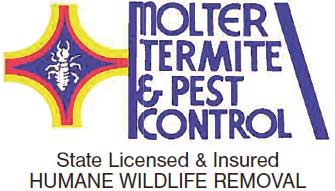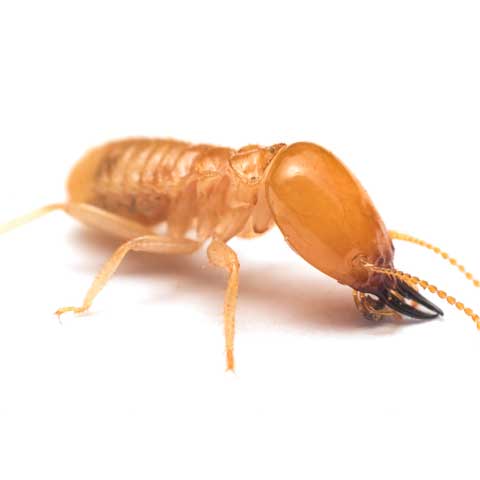Expert Termite Control and Removal in Florida
Drywood Termites
Fumigation is a method of pest control
that completely fills an area with gaseous pesticides—or fumigants—to suffocate or poison the pests within. It is utilized for control of pests in buildings (structural fumigation), soil, grain, and produce, and is also used during processing of goods to be imported or exported to prevent transfer of exotic organisms. This method also affects the structure itself, affecting pests that inhabit the physical structure, such as woodborers and drywood termites.
Structural fumigating techniques differ from building to building, but in houses a rubber tent is often placed over the entire house while the pesticides are being released into the vacant residence. This process is called tent fumigation or "tenting". The sealed tent concentrates the poisonous gases and prevents them from escaping into the neighborhood. The process can take up to a week depending on the fumigant used. This depends on the severity of infestation and size of the building.
Fumigation usually involves the following phases:
#1. The area to be fumigated is usually covered to create a sealed environment.
#2. Next the fumigant is released into the space to be fumigated.
#3. The space is held for a set period while the fumigant gas percolates through the space and kills any infestation in the structure.
#5. The space is ventilated so that the poisonous gases are allowed to escape from the space and render it safe for humans to enter.
Subterranean Termites
Prevention
Subterranean termites feed exclusively on wood materials and have strict moisture requirements. With these characteristics in mind, a lot can be done to prevent an infestation by eliminating the food and moisture resources in their environment. Listed below are a few practical ways to prevent termite infestation by modifying their habitat.
- Repair Structural and plumbing leaks.
- Pull all mulch and landscaping back at least 6 inches from the foundation.
- Remove piles of trash and debris from around the home.
- Remove dead tree stumps from the yard.
- Keep firewood stacked away from the structure.
- Downspouts should be long enough to direct water away from the foundation.
- Keep gutters clean.
- Avoid direct wood-to-ground contact when building porches or decks.
- Siding, brick veneer, or foam insulation should not extend below the soil grade.
Treatment
Subterranean termites are widespread throughout the United States. Because they are so abundant, prevention alone may not always protect a structure from infestation. If a structure has become infested, additional action must be taken. Over the past few years, the number of subterranean termite treatment methods has increased
Liquid Termiticide Applications
Liquid termiticides are usually applied completely around and underneath a structure covering all areas where termites might gain access. For an existing building, the perimeter of the foundation is trenched and drilled, then treated with termiticide. The goal of the treatment is to put a chemical blanket between the termites in the soil and the structure above. The chemical blanket can also affect those termites inside a building by preventing their successful return to the soil. In many case, these termites will die of dehydration.
Non-Repellent Termiticides
There are a few non-repellent termiticide treatments available on the commercial market. These chemicals are not repellant and termites cannot detect them in the soil. Therefore, the termites tunnel into the termiticide while foraging, contact the chemical, and die.
Termidor
Termidor is a non-repellent termiticide. The active ingredient is fipronil. Fipronil is unique in that it can be transferred from one termite to another through contact and trophallaxis (communal feeing). This allows it to affect more termites than those that contact the chemical directly. The advantage of this product is its long-term effectiveness in the soil. Test data indicate that fipronil may be effective longer after the initial application than other liquid termiticide products.

